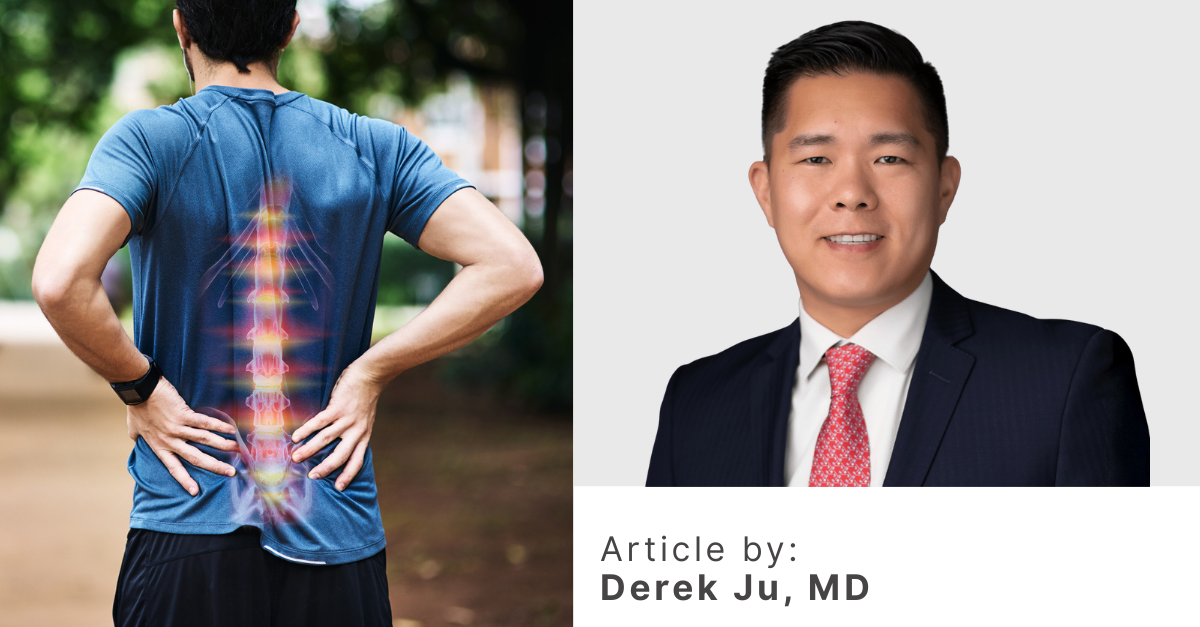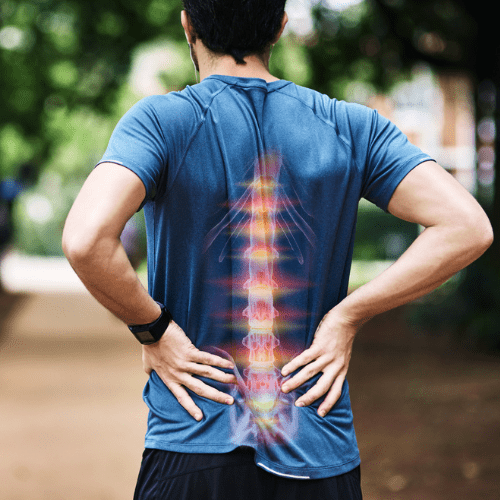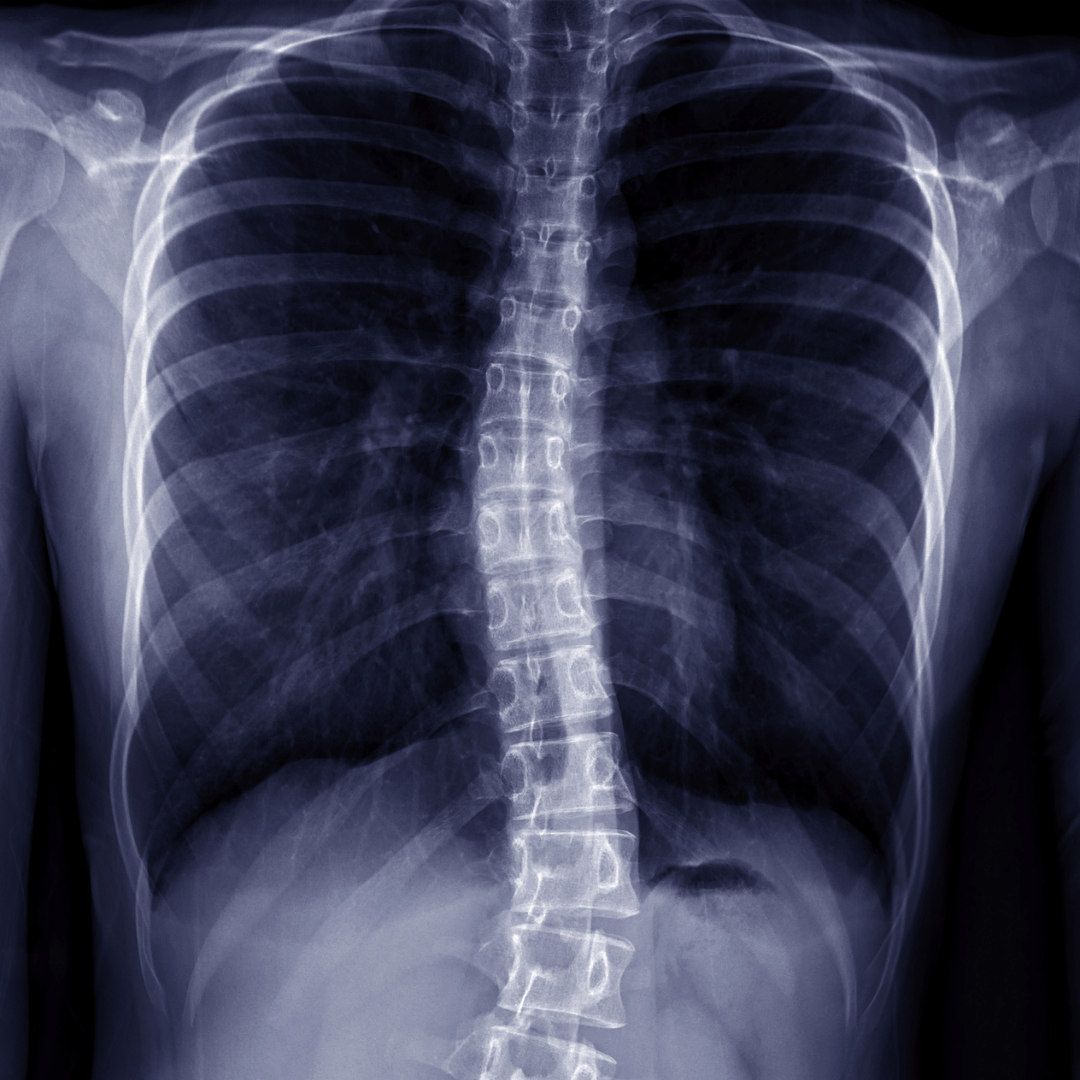
Featured Doctor
Derek Ju, MD
Dr. Derek Ju is a fellowship-trained and board-certified orthopedic spine surgeon at Orthopaedic Associates of Manhasset.
View Profile

Spondylolisthesis
What is spondylolisthesis?
This occurs when one vertebra slips forward over the one below it, usually in the lumbar spine.
What are the symptoms?
People typically experience lower back pain, leg pain or sciatica and potentially numbness or weakness with walking.
How is it treated?
Non-surgically, spondylolisthesis can be treated with physical therapy, core strengthening, bracing and pain management methods. The typical surgical treatment is a spinal fusion, however in low-grade slips, decompression surgery might be an option if spinal stenosis is without dynamic instability.
Sciatica
What is sciatica?
Sciatica is nerve pain radiating along the sciatic nerve, usually due to the compression of the L4 nerve root in the lumbar spine, to the S1 nerve root in the sacral spine.
What are the symptoms?
People typically experience sharp or burning pain down their leg along with numbness, tingling or weakness that usually worsens when sitting, coughing or with prolonged standing.
How is it treated?
Non-surgical options include medications, physical therapy and epidural steroid injections. The surgical treatment is a minimally invasive lumbar discectomy where we remove the disc fragment that is compressing the nerve root with minimal tissue disruption and a quick recovery.
Degenerative Disc Disease (DDD)
What is degenerative disc disease?
Degenerative disc disease is the natural wear-and-tear of spinal disc causing pain, inflammation and stiffness.
What are the symptoms?
People typically experience chronic back or neck pain which may worsen when sitting, bending or lifting.
How is it treated?
Non-surgical options include activity modification, physical therapy, medications and injections. If the disease is in the cervical spine, a cervical arthroplasty (disc replacement) is a fusion-sparing option that maintains motion while an anterior cervical discectomy and fusion (ACDF) can stabilize the spine by fusing the affected vertebrae. If the disease is in the lumbar spine, fusion is considered in severe cases.
Pinched Nerve (Radiculopathy)
What is a pinched nerve?
A pinched nerve is a compression or irritation of a nerve root, usually from a herniated disc, bone spur or narrowing of the spine (stenosis).
What are the symptoms?
People often experience radiating pain in their arms or legs, numbness or tingling, and/or muscle weakness.
How is it treated?
Anti-inflammatory medication, physical therapy and injections are conservative treatment methods. An anterior cervical discectomy (ACD) can be performed for cervical radiculopathy – it removes the disc and decompresses the nerve and is usually followed by fusion or cervical disc replacement. A minimally invasive lumbar discectomy is preferred for lumbar radiculopathy due to disc herniation.
Herniated Disc
What is a herniated disc?
A herniated disc is when the inner gel of a spinal disc leaks out and compresses nearby nerves.
What are the symptoms?
People often experience sudden back or neck pain, radiated nerve pain (sciatica or arm pain), and numbness or weakness.
How is it treated?
Herniated discs can be treated non-surgically with rest, physical therapy, medications and injections. Surgical options include a minimally invasive discectomy (lumbar or cervical) and anterior cervical discectomy and fusion (ACDF) or disc replacement.
Bulging Disc
What is a bulging disc?
A bulging disc is when the outer disc layer protrudes outward, without rupture. It may or may not press on a nerve.
What are the symptoms?
People often experience sudden back or neck pain or radiated nerve pain, but it may be milder than if they had a herniated disc.
How is it treated?
Bulging discs can be treated conservatively with physical therapy, medications and posture correction. If nerve compression is present, then a minimally invasive discectomy may be performed.







